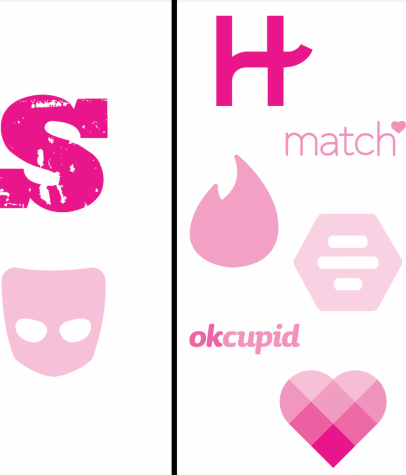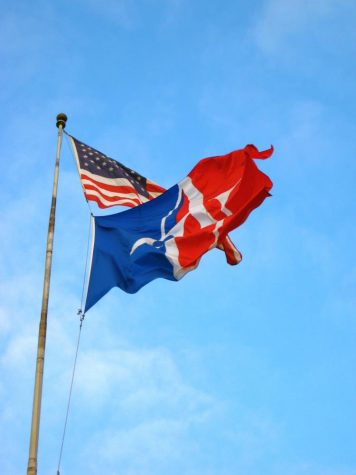Opinion ||: When East Meets West: Who Is the Fairest of Them All?
Every day, society bombards women with images and expectations of what they should look like. Many women then proceed to scrutinize every detail of their bodies, due to the Internet and social media, which provide for the immediate circulation of trends and standards. The media feeds these viral trends to the masses, spreading self-doubt and insecurities.
I would like to believe that I am immune to most of these meaningless trends, that I can feel confident enough in my own appearance that I wouldn’t want to fix anything about my face or body. But whether in my home country of Malaysia or in the United States, I cannot resist these viral trends. I have always looked in the mirror and lamented over my nose, until one day, my roommate Celia said she hated her “huge” nose.
Celia is of Irish heritage, tall and slim, with large doe eyes and a perfectly normal–in fact, prettier than average–nose. It’s the kind of nose that people back home in Malaysia would get nose jobs to have. In short, the kind of nose that I would want.
Conversely, she would much rather have my non-existent one, mine that looks like a weird blob that spans the middle section of my face horizontally, and makes wearing glasses a pain. Which eventually got me thinking – why do we have such different ideas of beauty? What are the historical, economical and cultural backgrounds that led to the two of us, raised in two ends of the world, to develop completely different views on female beauty?
Every family gathering in Malaysia during semester break is a flurry of extended relatives. They are the support system of every family, ready with advice and help, but for the younger generation, it means facing a deluge of questions. The one question that always, inevitably pops up when my family first lays eyes on me: “Ai-yah (Oh my)! Your skin is getting so dark!” I have a yellow-based skin tone, which means trying to achieve the ideal white glow is quite pointless. So, I opt to go tan, to avoid looking like a sallow ailing person. In the process, I end up bringing upon myself the ire of all my older female relatives.
Asian women everywhere strive to achieve flawless, porcelain skin that glows from the inside out. A popular Chinese saying goes, “Fairness covers a hundred flaws.” Pregnant women are constantly reminded by older women not to eat dark colored foods like soy sauce, chocolate or coffee, so that their babies are not born with dark skin. The Asian cosmetics industry makes a huge profit selling whitening products, with sales of skin-lightening products in China hitting $2 billion dollars in 2012.
As there is so much investment in maintaining fair skin, the lengths that Western women go to to get that “perfect tan” would be unthinkable among Asian women. Historically speaking, ivory, pale skin is a status symbol in Asia, as women who were rich would not need to work in the fields out in the sun. That mentality still puts pressure on the Asian women of today. This was true for western culture as well, but somewhere along the way, things changed. To Western minds then, tan skin could mean that one has the economic means to travel abroad to exotic locations and acquire a tan. A study from Emory University has even found that people with tan skin were rated to be “hotter.”
Skin tone is just the tip of the iceberg when it comes to beauty ideals, yet with every trend, East and West tend to diverge. Let’s talk about lips. I have a rather large mouth and relatively full lips, yet in Chinese culture, small lips or “cherry lips” are considered to be more desirable. The ideal may have it’s roots in a line written by Tang poet Bai Juyi, “The concubine Fan Su’s cherry lips.” My mother has even commented on my mouth growing increasingly larger as I grow older.
In Korea, “gradient lips,” where lipstick is only applied on the center of the lips to make the mouth look smaller, is a huge trend. I tried the gradient lip a few times, to make my lips appear smaller at the insistence of a friend, but I instead ended up with dry and chapped lips. Here in America, the size of a woman’s lips is becoming more of a focus. In fact, over the past year the full lip look has been widely popularized by Kylie Jenner.
Speaking of the Kardashians, another notable difference in beauty standards is the ideal size of butts. America has the weirdest obsession with butts. Nicki Minaj, Kim Kardashian and a slew of other celebrities have gotten butt implants. When I asked Adam Lee, a friend from Malaysia, about butt implants and showed him before and after photos of Nicki Minaj, he said bluntly, “It’s disgusting.” We also discussed the notorious thigh gap.
“It doesn’t really matter whether you have one or not, it’s not the first thing I look for when I meet someone,” Lee said.
While each person must decide for themselves whether to follow beauty trends, it’s also important to consider the effects that these viral trends have on our collective consciousness. For the growing teenage girl, trying to keep up with these different beauty standards could be incredibly damaging to her self-esteem and mental health. Studies have shown that in America, 47 percent of girls in 5th to 12th grade wanted to lose weight because of magazine pictures, yet only 5 percent of women possess the body type portrayed in these pictures. This pressure to be a certain body type could lead to eating disorders such as anorexia and bulimia.
Trying to emulate celebrity looks could be detrimental to physical health as well. Kylie Jenner’s lush lips spawned a #kyliejennerchallenge, which saw young people putting their lips into a shot glass, then sucking all the air out to DIY Jenner’s lips. Many ended up with bruised and damaged lips.
Similarly, this June a post about the so-called the “belly button challenge” went viral on “Weibo,” the Chinese version of Twitter. The challenge dared girls to twist their arms behind their bodies to try to reach their belly buttons in order to prove that they were “healthy and fit.” This is not an actual measure of fitness, of course, and only perpetuates the mainstream body type of being petite and slim in Asia. As James Hamblin of The Atlantic explained, “It’s actually a test of shoulder flexibility, not fitness.” Soon after the belly button challenge came the “collarbone challenge,” which also claimed that a girl could be considered slim and pretty if she could put a roll of quarters in the dip of her collarbone.
These trends are only from this year. If we take a look back over the past few years there have been just as many crazy trends, from girls in Korea getting plastic surgery to look like they are permanently smiling, to women in New York getting surgery to look more like their Instagram photos. These trends continue to sprout awkward word choice, but I’m too tired to think of something better, haha and they will not stop, at least not overnight.
The idea that women and girls should look a certain way is universal, and the image of “ideal” women in the media has become the norm. There has been some change for the better, spearheaded by celebrities like Lena Dunham, whose Instagram account is wonderfully body positive, and Amy Poehler, who started the campaign #Smartgirlsask to change the standard “What are you wearing?” red carpet question. Still, too much of what we see in the media still follows the vein of “women should look like this.” But women are way more than looks, and that is a message that needs to get out more and that we all to remember on a daily basis.












